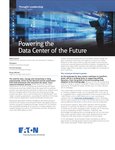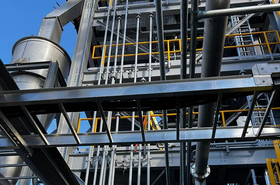Meta's data center electricity usage reached 14,975,435MWh in 2023, an increase of 34 percent.
Of that, some 2,187,020MWh was for leased data center facilities - a significant 97 percent jump year-over-year.
Meta's data center power use
Across the company's 16 facilities (excluding leased), the Meta campus in Prineville, Oregon, was the biggest consumer of electricity, at 1,375,321MWh. It is followed by Altoona, Iowa, at 1,243,306MWh, and Sarpy, Nebraska, at 1,148,091MWh.
Electricity intensity per monthly active person also grew to 0.0041MWh, up 32 percent. Similarly, electricity intensity per million USD in revenue went up to 131.42, up 33 percent, the company revealed in its latest sustainability report.
That electricity, the company said, is 100 percent from renewable energy - at least, that is, via PPAs and RECs. PUE stayed steady at 1.08.
The company's fuel consumption also fell, with natural gas dropping 36 percent to 4,818,116 therms. Diesel distillate fuel oil No. 2 dropped 25.5 percent to 1,025,707 gal, while distillate fuel oil No. 4 fell 3.42 percent to 699,427 gal. Gasoline usage fell 81.4 percent to 22,309 gal.
Meta also began its first deployment of hydrotreated vegetable oil at its site in Clonee, Ireland, with 1,144 gal. The company said it testing the diesel replacement through 2024 to determine whether to transition the rest of its generators globally.
Meta's water consumption
Data center water withdrawal hit 3,881 megaliters (a megaliter is equal to one million liters), up seven percent. In some locations, including Altoona, Clonee, Odense, and Prineville, water usage dropped.
However, water withdrawal from groundwater increased 137 percent to 88 megaliters. Water withdrawals from areas with high or extremely high baseline water stress increased 20 percent to 1,360 megaliters.
It also used an estimated embedded 55,475 megaliters through the use of its purchased electricity, up 35 percent
On the more positive side, water restoration efforts reached 5,889 megaliters, up 150 percent.
The company's WUE fell to 0.18, from 0.20, but water withdrawal per monthly active person increased 7 percent to 0.001410 liters. Water withdrawal per million USD in revenue also increased 7 percent to 45 liters.
"Our newest AI-optimized data centers currently under construction will feature dry-cooling technology," Meta said in its report. "Dry cooling uses air as the cooling medium minimizing water usage, making it the most efficient cooling technology for these geographic locations."
Meta is aggressively building out its data center footprint, with capex hitting $8.5 billion in the last quarter. It expects costs to rise over the next year as it develops its generative AI infrastructure.






